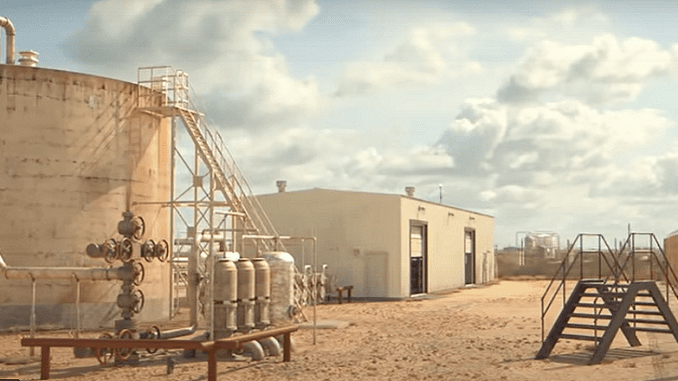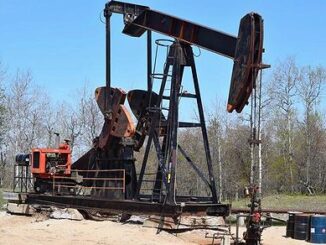
MIDLAND, Texas, March 13, 2022 (ENS) – A federal grand jury in Midland has returned an indictment charging the oilfield company Aghorn Operating Inc. and an executive of the company with worker safety and environmental crimes.
Aghorn and Trent Day, vice president of Aghorn, were indicted for violating the Clean Air Act relating to releases of hydrogen sulfide, H2S, from an Aghorn facility, as well as obstructing a federal investigation by the Occupational Safety and Health Administration, OSHA.
Aghorn was also charged with three worker safety OSHA crimes for causing the death of an Aghorn employee.
In addition, Aghorn and Day, along with another corporation, Kodiak Roustabout Inc., were charged with violating the Safe Drinking Water Act and making false statements regarding the mechanical integrity of Aghorn injection wells in forms and pressure charts filed with the State of Texas Railroad Commission.
The charges in the indictment returned March 8 are the result of an investigation of the deaths of Aghorn employee, Jacob Dean and his wife, Natalee Dean. Both were overcome by hydrogen sulfide, a poisonous gas, at an Aghorn facility in Odessa on October 26, 2019.
The indictment alleges that on the night of the incident Jacob Dean responded to a call to check the pump house at the facility, an enclosed building with two bay doors. His wife, Natalee Dean, knew where Jacob had gone, and started calling him when he did not return in a timely manner.
When those calls went unanswered, Natalee drove to the station with her two children, aged nine and six. A pump had failed in the pump house, causing a leak of produced water containing hydrogen sulfide. Jacob had been overcome by hydrogen sulfide in the pump house, and when Natalee arrived at the station, she left the vehicle and went to the pump house, where she too was overcome by the gas.
Both Jacob and Natalee Dean were found dead by the first responders to the scene.
The indictment states that, “Aghorn was aware that its produced water contained high amounts of H2S as well as the deadly nature of the gas.”
Aghorn and Trent Day allegedly “knowingly violated their general duty to prevent the accidental release” of hydrogen sulfide and also knowingly “placed another person in imminent danger of death or serious bodily injury.”
OSHA began an investigation two days later, and the U.S. Chemical Safety Board, CSB, also conducted an investigation.
CSB Chair and CEO Dr. Katherine Lemos says, “We urge companies operating oil and gas facilities to understand the findings from this investigation and implement appropriate safeguards and training. We need to work together to ensure that our workers and community members return home safely each and every day.”
The indictment alleges that Aghorn and Day obstructed the OSHA investigation, arising out of statements made by Day to OSHA investigators in two separate interviews.
The mechanical integrity of an injection well must be evaluated by conducting pressure tests or alternative testing methods approved by the Railroad Commission. In evaluating the results of a pressure test, the Railroad Commission considers the level of pollution risk that loss of well integrity would cause.
Aghorn operated numerous produced water injection wells, and submitted purported well pressure test results to the Railroad Commission. The indictment alleges that the defendants made false statements regarding the mechanical integrity of Aghorn injection wells in forms and pressure charts filed with the Railroad Commission.
When OSHA’s final report on the incident was filed by the U.S. Chemical Safety Board on May 21, 2021, the Railroad Commission made a six-part recommendation in the report to prevent other such deaths from H2S, including the use of a personal H2S detector.
“Develop and send a Notice to Operators to all oil and gas operators that fall under the jurisdiction of the Railroad Commission of Texas that describes the safety issues described in this report, including: 1. Nonuse of Personal H2S Detector 2. Nonperformance of Lockout / Tagout 3. Confinement of H2S Inside Pump House 4. Lack of Safety Management Program 5. Nonfunctioning H2S Detection and Alarm System 6. Deficient Site Security.”
OSHA made a similar recommendation. To view all recommendations in the OSHA report, click here.
“Our nation’s environmental laws are designed to protect our communities and workers from hazardous pollutants,” said Assistant Special Agent in Charge Todd “Tony” Adams of the U.S. Environmental Protection Agency’s Southwest Area Criminal Investigation Program. “Today’s indictments demonstrate that companies intentionally violating those laws and endangering others will be held responsible for their crimes.”
If convicted, a federal district court judge will sentence Aghorn and vice president Trent Day after considering the U.S. Sentencing Guidelines and other statutory factors.
Featured image: The Aghorn facility where Aghorn employee, Jacob Dean and his wife, Natalee Dean, were overcome by the poisonous gas hydrogen sulfide on October 26, 2019. Odessa, Texas. (Screengrab from video by the U.S. Chemical Safety Board)
© 2022, Environment News Service. All rights reserved. Content may be quoted only with proper attribution and a direct link to the original article. Full reproduction is prohibited.



